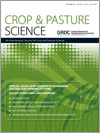Continuous-cropping systems based on no-till and crop residue retention have been widely adopted across the low-rainfall cereal belt in southern Australia in the last decade to manage climate risk and wind erosion. This paper reports on two long-term field experiments that were established in the late 1990s on texturally different soil types at a time of uncertainty about the profitability of continuous-cropping rotations in low-rainfall environments. Continuous-cereal systems significantly outyielded the traditional pasture–wheat systems in five of the 11 seasons at Waikerie (light-textured soil), resulting in a cumulative gross margin of AU$1600 ha–1 after the initial eight seasons, almost double that of the other treatments. All rotation systems at Kerribee (loam-textured soil) performed poorly, with only the 2003 season producing yields close to 3 t ha–1 and no profit achieved in the years 2004–08. For low-rainfall environments, the success of a higher input cropping system largely depends on the ability to offset the losses in poor seasons by capturing greater benefits from good seasons; therefore, strategies to manage climatic risk are paramount. Fallow efficiency, or the efficiency with which rainfall was stored during the period between crops, averaged 17% at Kerribee and 30% at Waikerie, also indicating that soil texture strongly influences soil evaporation. A ‘responsive’ strategy of continuous cereal with the occasional, high-value ‘break crop’ when seasonal conditions are optimal is considered superior to fixed or pasture–fallow rotations for controlling grass, disease or nutritional issues.
How to translate text using browser tools
28 April 2015
Long-term cropping system studies support intensive and responsive cropping systems in the low-rainfall Australian Mallee
A. M. Whitbread,
C. W. Davoren,
V. V. S. R. Gupta,
R. Llewellyn,
D. Roget
ACCESS THE FULL ARTICLE

Crop and Pasture Science
Vol. 66 • No. 6
May 2015
Vol. 66 • No. 6
May 2015
climate variability
continuous cropping
crop modelling
low rainfall cropping
risk management
rotations




